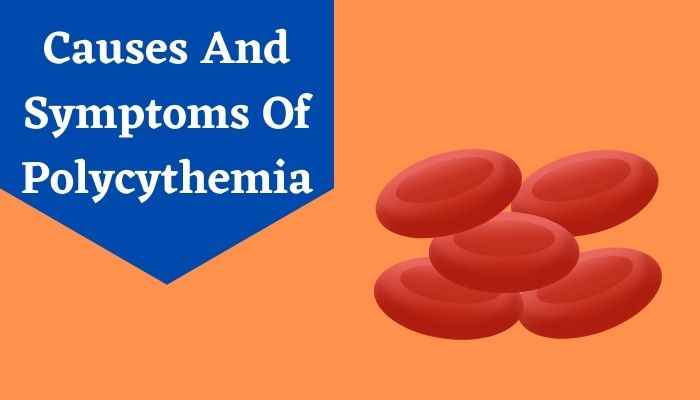Rajesh is an employee who is working in a private company in Hyderabad. The company instructed him to work from home due to COVID-19. He is not able to complete his work on time and noticed some unusual symptoms such as blood clots. So, he visited a nearby hospital to undergo a medical check-up. The diagnostic reports indicated that he is suffering from polycythemia vera causes and suggested some treatments for them. He is improving now and focusing on his work.
Unless you know the exact polycythemia causes, treating this condition would be a tough task. So, make sure to examine its causes to get proper treatment for blood cell disorders like polycythemia.
What is Polycythemia?
Polycythemia is a condition that leads to the production of excess blood cells in the bone marrow. It results in excess red blood cells which can influence certain symptoms. In some cases, the condition may cause high white blood cells and platelets. The extra cells may influence blood clots and other problems which can affect a person in many ways.

It is common in people who are above 60 years old. Primary polycythemia and secondary polycythemia are the two types that can appear in a person. One should know the difference between them that will help a lot to gain more ideas.
Difference between primary polycythemia and secondary polycythemia?
Primary polycythemia is a hereditary disease. A mutation in the bone marrow cells, which create your red blood cells, is the most prevalent reason.
Causes are-
Change in Genes
Secondary polycythemia occurs when your body produces too many red blood cells as a result of another disorder.
Causes are-
- Sleep Apnea,
- Lung or heart disease,
- Performance enhancing drugs
What are the Causes of Polycythemia?
When talking about polycythemia causes, the exact cause is still not known and medical experts say that changes in specific genes are responsible for the problem. Primary polycythemia, also known as polycythemia vera, causes mainly due to abnormalities in red blood cells. Secondary polycythemia is primarily caused by the low supply of oxygen to the body due to smoking, lung disease, heart disorder, sleep apnea, etc.
What are the Symptoms of Polycythemia?
The symptoms of polycythemia may vary from one patient to another patient. Some of them include dizziness, blurred vision, fatigue, bruising, bleeding gums, abdominal fullness, and itchy skin. The symptoms of primary polycythemia include blood clots, angina, heart disease, gout, and peptic ulcers.
How is Polycythemia Diagnosed?
Those who suffer from polycythemia should undergo several medical tests to know the underlying causes. Not only that, the diagnostic procedures provide methods to determine the right type of treatment depending on the conditions.

A blood test is necessary for patients who are having polycythemia. It will help know any increase in the red blood cells as well as abnormal levels of platelets and white blood cells with high accuracy. If necessary, a doctor may recommend a bone marrow biopsy to a patient that gives ways to detect the symptoms. Genetic tests are also essential for knowing the underlying cause.
What is the Treatment for Polycythemia?
The treatment for polycythemia depends on the symptoms and other factors. A physician will recommend phlebotomy for polycythemia which involves removing blood through one of the veins. Sometimes, this procedure doesn’t work well for a patient because it won’t control blood cell growth. Apart from that, doctors recommend myelosuppressive drugs that will help control excess blood cell counts.
Moreover, a doctor may suggest drugs that inhibit the JAK2 enzyme when a patient doesn’t respond well to other medications. Not only that, patients should take some medications for preventing blood clots and other problems effectively.
Tips to Control Polycythemia
1. Making Lifestyle Changes
A person should maintain his/her overall health in a good state that will help manage symptoms. It provides methods to stay away from health risks which give methods to ensure peace of mind. Stress may impact the health of a person and he/she should know how to manage the same from various sources.
2. Exercising Daily
Exercising daily enables a person to lead an active lifestyle thereby showing ways to prevent unwanted complications. Also, it even contributes more to focus more on his/her health goals. While doing exercises, people should follow the instructions properly that help achieve better results.
3. Maintaining a Healthy Weight
People should maintain their weight in a healthy state because it makes feasible methods to live a problem-less life. Keeping a healthy weight allows a person to overcome the excess production of red blood cells.
4. Staying Hydrated
Staying hydrated allows a person to minimize the symptoms of polycythemia and drinking water and fruit juices will do major wonders. Drinking fluids give ways to stay hydrated that help reduces the excess production of red blood cells.
5. Protecting Skin
It is important to protect the skin from extreme cold or hot conditions. One should consider applying sunscreen lotions and other creams to minimize skin issues. Protecting skin will reduce polycythemia condition effectively. Using moisturizers and over-the-counter antihistamine products offer solutions for skin itching problems to a large extent.
6. Avoiding Smoking
Smoking can cause the narrowing of blood vessels and can influence blood clots. It even increases the risks of cancer and heart disease which will affect the quality of life. The practice can lead to blood cell disorders resulting in bleeding and other issues. Therefore, one should avoid smoking to lead a healthy lifestyle.
7. Preventing Injuries to Feet and Hands
Hurting feet and hands can increase the blood clots that result in complications. Wearing protective shoes and gloves will help prevent injuries and other issues.
8. Eating a Well-Balanced Diet
Eating a well-balanced diet offers solutions for the symptoms of polycythemia that help lead a healthy life. Selecting calcium-rich foods, lean proteins, fruits, vegetables, nuts, and whole grains will improve the conditions of a person effectively. They even show methods to keep the energy levels throughout the day to perform important activities without any hassles. It is wise to avoid foods such as beans, berries, high-fat foods, processed foods, deep-fried foods, and foods that contain excess purine. Foods that are rich in sodium can influence polycythemia and one should avoid them to reduce the high production of red blood cells.
The Bottom Line
Red blood cell diseases can lead to potential risks and they need immediate medical care in a hospital. Anyone willing to lower them should follow a healthy lifestyle and other things that will help accomplish goals. A person should undergo a regular medical check-up to know the symptoms in advance. It even gives ways to minimize health problems thereby helping to experience peace of mind.




